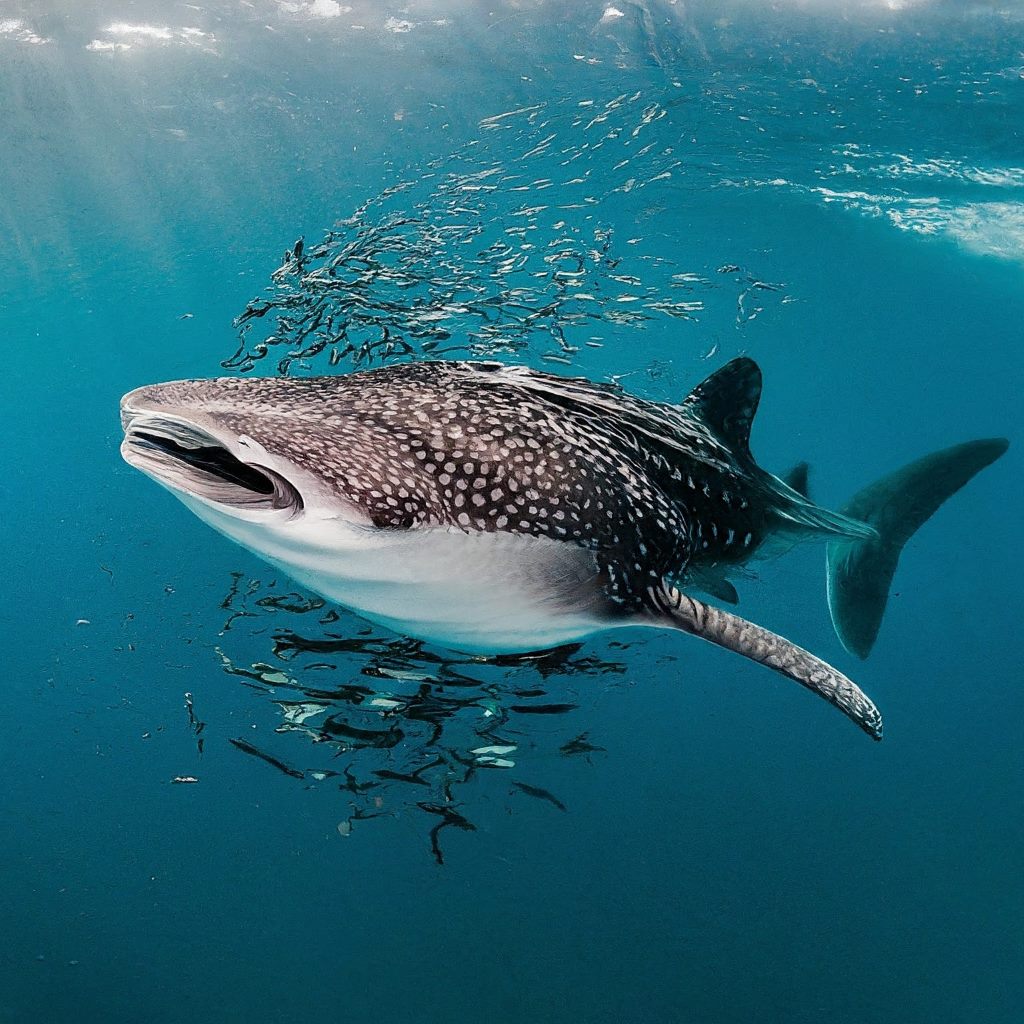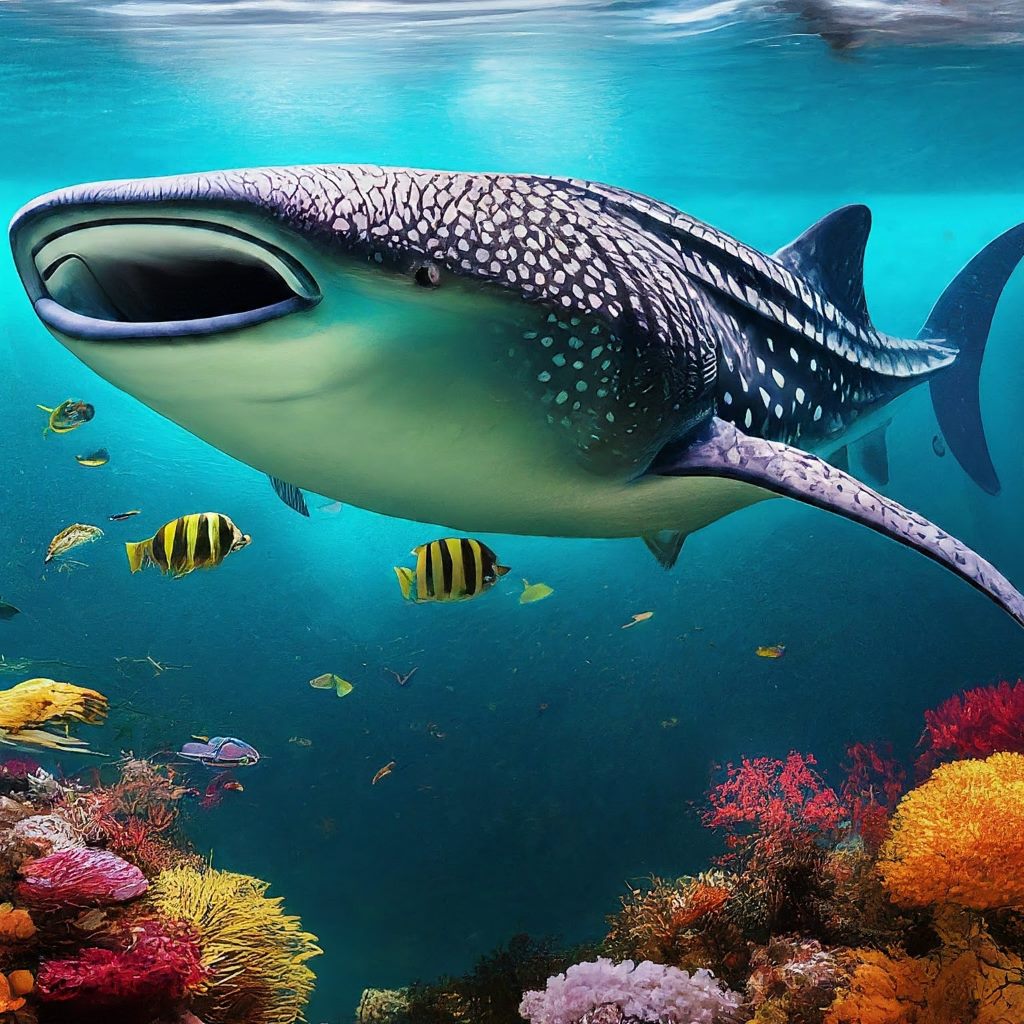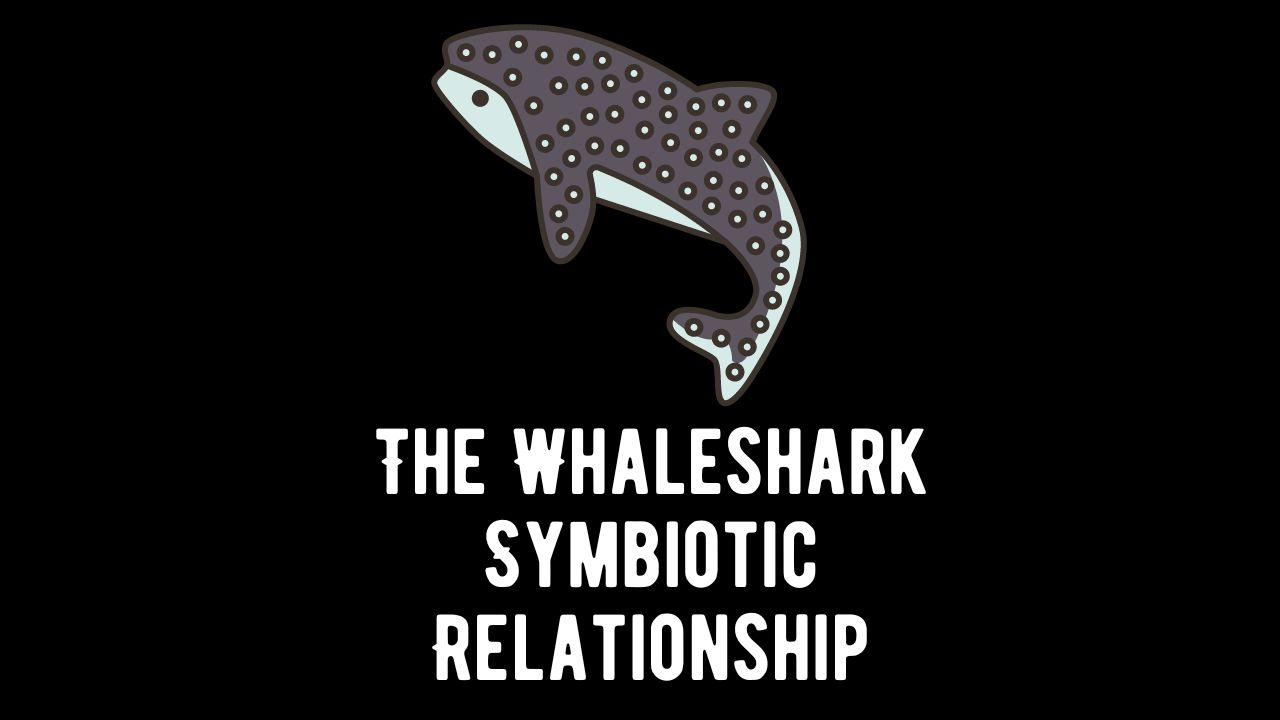In the expansive depths of the world’s oceans, beneath the gentle sway of the waves, a fascinating dance of mutual benefit unfolds—the symbiotic relationships involving the majestic whale shark. As the largest fish in the sea, whale sharks engage in intricate connections with various marine organisms. Join us on a deep-sea exploration as we unveil the secrets of the whale shark’s symbiotic relationships, shedding light on their behaviors, ecological importance, and the delicate balance they maintain within marine ecosystems.
Introduction to the Whale Shark:
1. Majestic Giants:
- Whale sharks (Rhincodon typus) are awe-inspiring creatures, known for their immense size and distinctive spotted patterns.
- These gentle filter-feeders hold the title of the largest fish in the ocean.
2. Global Presence:
- Whale sharks are found in tropical and warm-temperate seas, traversing the globe in search of food and suitable habitats.

Symbiotic Relationships:
1. Remoras and Pilot Fish:
- Remoras (Echeneidae): These small fish often attach themselves to the whale shark, benefiting from the shark’s movement and gaining access to food particles stirred up during feeding.
- These suctionfish attach themselves to whalesharks using their dorsal fins to hitch a ride.
- They benefit by feeding on parasites and scraps of food that fall from the whaleshark’s mouth.
- The whaleshark, in turn, is cleaned and free of parasites.
- Pilot Fish (Naucrates ductor): These fish swim alongside whale sharks, feeding on parasites and small organisms that may attach to the shark’s skin.
2. Parasite Cleaning Stations:
- Certain marine organisms, such as cleaner fish and cleaner shrimp, establish cleaning stations where whale sharks visit to get rid of parasites, dead skin, and debris.
3. Algae and Microorganisms:
- The skin of whale sharks can host various algae and microorganisms, forming a unique microhabitat. These organisms may contribute to the overall health of the whale shark.
Whalesharks, despite their massive size, are gentle giants that engage in symbiotic relationships with smaller marine creatures. Here are some notable examples:
4. Copepods:
- These tiny crustaceans live on the whaleshark’s skin, feeding on dead skin cells and mucus.
- They help to keep the whaleshark’s skin clean and free of parasites.
5. Seabirds:
- Seabirds like gulls and terns often follow whalesharks, waiting for them to surface and feeding on any scraps of food that escape their mouths.
- This symbiotic relationship benefits the seabirds while having little impact on the whaleshark.
6. Whale Lice:
- These small crustaceans live on the whaleshark’s skin, feeding on mucus and dead skin cells.
- While they may seem parasitic, their presence is likely beneficial to the whaleshark as they help to keep the skin clean.
Feeding Habits and Ecosystem Impact:
1. Filter-Feeding Mastery:
- Whale sharks feed by filtering large volumes of water through their mouths, capturing plankton, small fish, and other microscopic organisms.
- The feeding process has a cascading effect on the abundance and distribution of prey species.
2. Nutrient Cycling:
- Whale sharks play a role in nutrient cycling within marine ecosystems. The release of feces and excreted material contributes essential nutrients to the surrounding waters.

Migration and Reproductive Significance:
1. Global Migrations:
- Whale sharks undertake extensive migrations, traveling across ocean basins. The reasons behind these migrations are not fully understood but are believed to be linked to feeding opportunities and reproductive behaviors.
2. Reproductive Mystery:
- The reproductive habits of whale sharks remain a mystery, with limited information about their mating grounds and breeding behaviors.
Conservation Challenges and Efforts:
1. Threats to Whale Sharks:
- Despite their protected status in many regions, whale sharks face threats such as ship strikes, entanglement in fishing gear, and habitat degradation.
- Climate change and shifts in oceanic conditions may also impact the distribution of their prey.
2. Conservation Initiatives:
- Various conservation initiatives focus on studying and protecting whale sharks, including the use of photo-identification databases and satellite tagging to track their movements.
- Community-based ecotourism programs promote responsible interactions with whale sharks.
Educational Significance:
1. Marine Education Programs:
- Whale sharks serve as ambassadors for marine conservation, inspiring educational programs and research initiatives to raise awareness about the importance of protecting these gentle giants.
2. Public Engagement:
- Public fascination with whale sharks contributes to a broader understanding of marine ecosystems and the need for sustainable practices to safeguard these magnificent creatures.
Conclusion:
The whale shark’s symbiotic relationships underscore the interconnections of marine life. From the small remoras that hitch a ride to the microscopic organisms on their skin, whale sharks weave a tapestry of interactions that ripple through ocean ecosystems.
As stewards of the ocean depths, the conservation of whale sharks goes beyond preserving a single species—it represents a commitment to safeguarding the health and diversity of the entire marine realm. In the vastness of the ocean, where giants roam, the whale shark stands as a testament to the beauty and complexity of life beneath the waves.
(FAQs) About Whale Shark Symbiotic Relationships
Q1: How do remoras benefit from their relationship with whale sharks?
Remoras benefit from their association with whale sharks in multiple ways. They attach themselves to the shark, gaining free transportation and access to food particles stirred up during feeding. This relationship provides the remoras with a steady source of nutrients and protection.
Q2: What is the significance of cleaner fish and shrimp at cleaning stations for whale sharks?
Cleaner fish and shrimp at cleaning stations play a crucial role in maintaining the health of whale sharks. By removing parasites, dead skin, and debris from the shark’s body, they contribute to the overall well-being of the shark. This cleaning behavior helps prevent potential infections and ensures the shark’s skin remains in optimal condition.
Q3: How do pilot fish contribute to the symbiotic relationship with whale sharks?
Pilot fish swim alongside whale sharks, feeding on parasites and small organisms that may attach to the shark’s skin. In this symbiotic relationship, pilot fish gain access to a food source, while the whale shark benefits from having potential parasites removed, contributing to its overall health.
Q4: Why do whale sharks visit cleaning stations?
Whale sharks visit cleaning stations to engage with cleaner fish and shrimp that offer their cleaning services. At these stations, the whale sharks get rid of parasites, dead skin, and debris, promoting a symbiotic relationship that benefits both the sharks and the cleaning organisms.
Q5: How do algae and microorganisms on whale shark skin contribute to their well-being?
The presence of algae and microorganisms on whale shark skin creates a unique microhabitat. While the exact significance is not fully understood, it is believed that these organisms may contribute to the overall health of the whale shark. The relationship between the whale shark and these microorganisms adds another layer to the complexity of symbiotic interactions.
Q6: What impact do whale sharks have on nutrient cycling in marine ecosystems?
Whale sharks play a role in nutrient cycling within marine ecosystems. Through their feeding habits, which involve filtering large volumes of water to capture plankton and small organisms, they release feces and excreted material back into the water. This process contributes essential nutrients to the surrounding waters, influencing the nutrient cycling dynamics in the ecosystem.
Q7: How are conservation efforts helping protect whale sharks?
Conservation efforts for whale sharks include initiatives such as photo-identification databases and satellite tagging to track their movements. Additionally, community-based ecotourism programs promote responsible interactions with whale sharks, generating awareness and funds for conservation. Efforts also focus on addressing threats such as ship strikes, entanglement in fishing gear, and habitat degradation to ensure the long-term survival of these magnificent creatures.
Q8: Why are whale sharks considered ambassadors for marine conservation?
Whale sharks are considered ambassadors for marine conservation due to their charismatic nature and the public fascination they evoke. Their unique characteristics make them excellent subjects for educational programs, inspiring people to learn about marine ecosystems and the importance of protecting biodiversity. As flagship species, they draw attention to broader conservation issues and the need for sustainable practices to preserve the health of the oceans.
